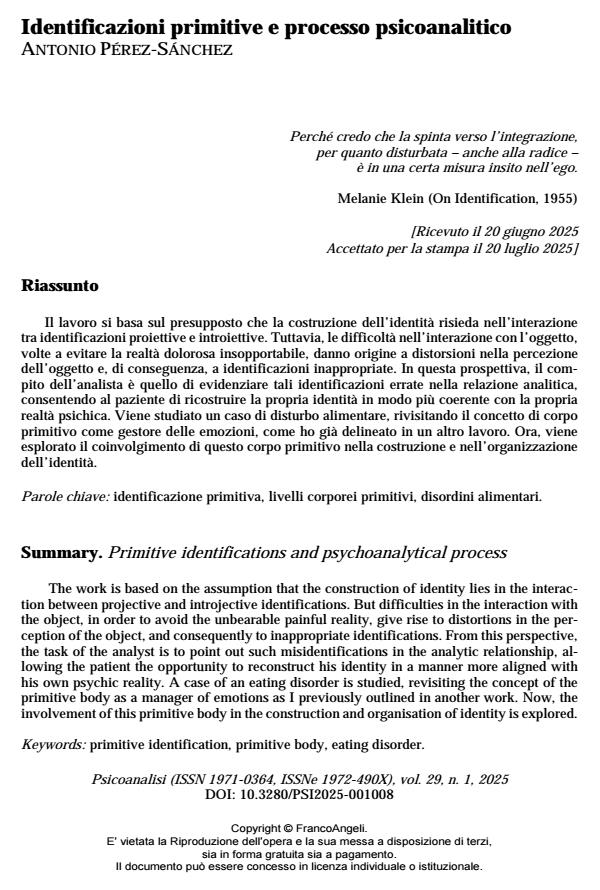Primitive identifications and psychoanalytical process
Journal title PSICOANALISI
Author/s Antonio Pérez-Sánchez
Publishing Year 2025 Issue 2025/1
Language Italian Pages 14 P. 95-108 File size 83 KB
DOI 10.3280/PSI2025-001008
DOI is like a bar code for intellectual property: to have more infomation
click here
Below, you can see the article first page
If you want to buy this article in PDF format, you can do it, following the instructions to buy download credits

FrancoAngeli is member of Publishers International Linking Association, Inc (PILA), a not-for-profit association which run the CrossRef service enabling links to and from online scholarly content.
The work is based on the assumption that the construction of identity lies in the interaction between projective and introjective identifications. But difficulties in the interaction with the object, in order to avoid the unbearable painful reality, give rise to distortions in the perception of the object, and consequently to inappropriate identifications. From this perspective, the task of the analyst is to point out such misidentifications in the analytic relationship, allowing the patient the opportunity to reconstruct his identity in a manner more aligned with his own psychic reality. A case of an eating disorder is studied, revisiting the concept of the primitive body as a manager of emotions as I previously outlined in another work. Now, the involvement of this primitive body in the construction and organisation of identity is explored.
Keywords: primitive identification, primitive body, eating disorder.
Antonio Pérez-Sánchez, Identificazioni primitive e processo psicoanalitico in "PSICOANALISI" 1/2025, pp 95-108, DOI: 10.3280/PSI2025-001008